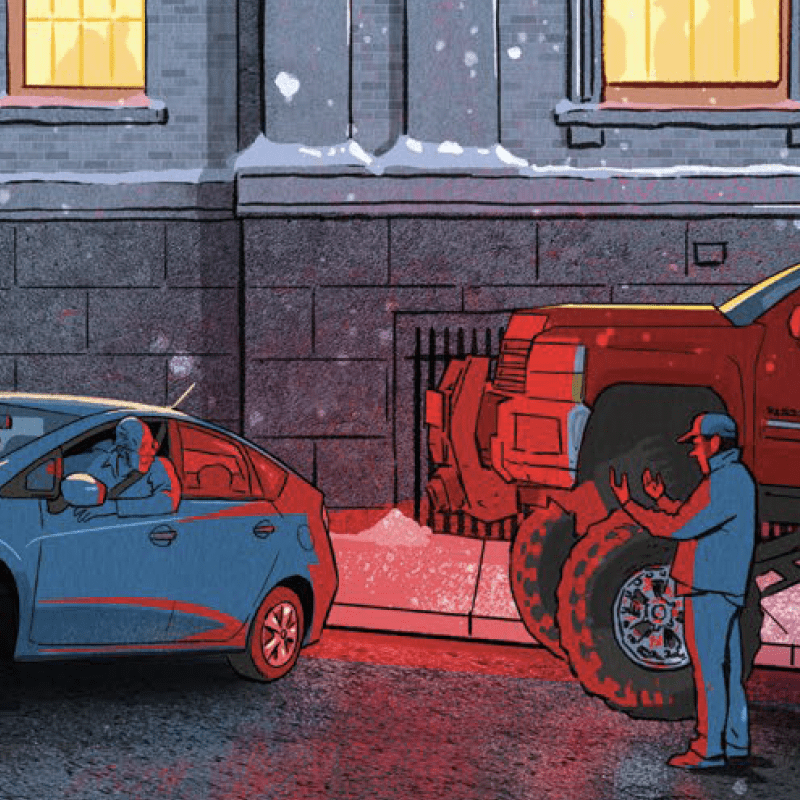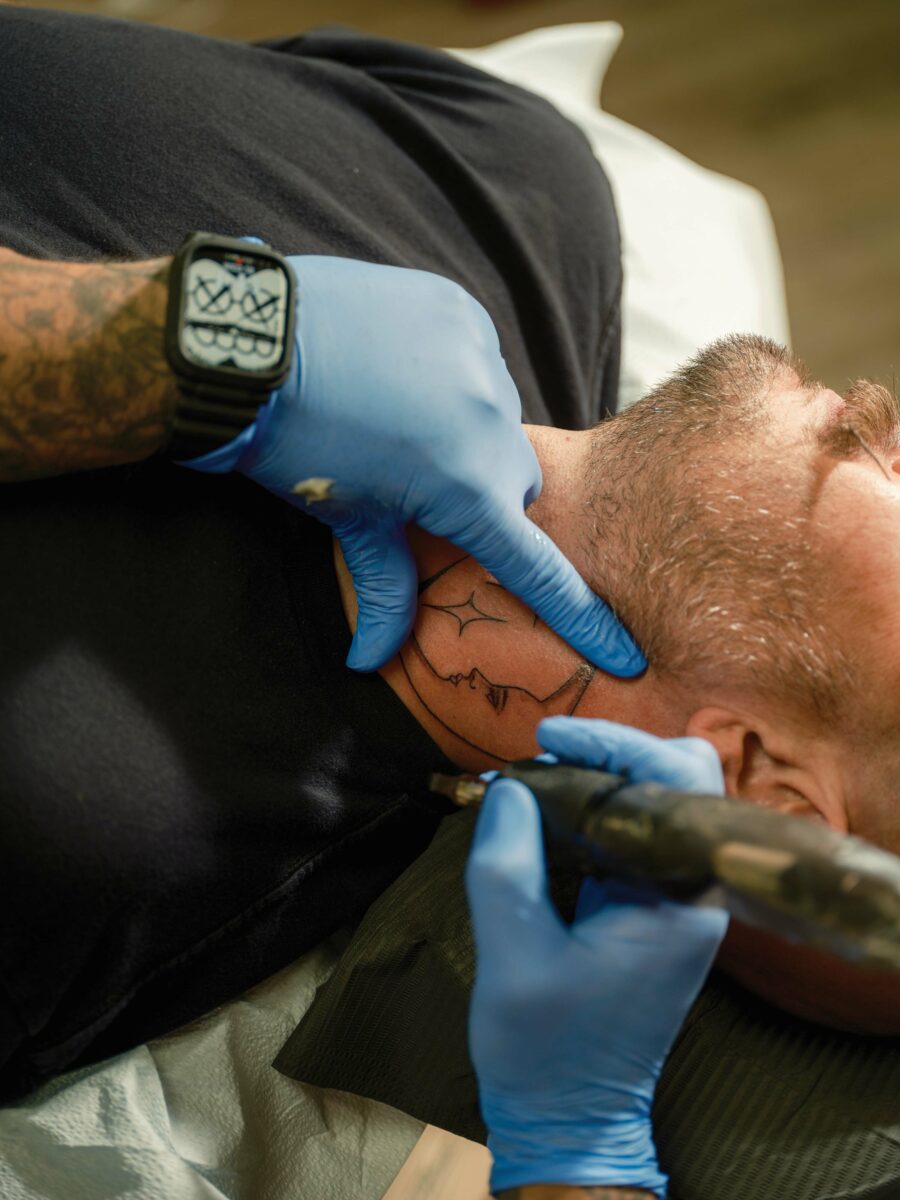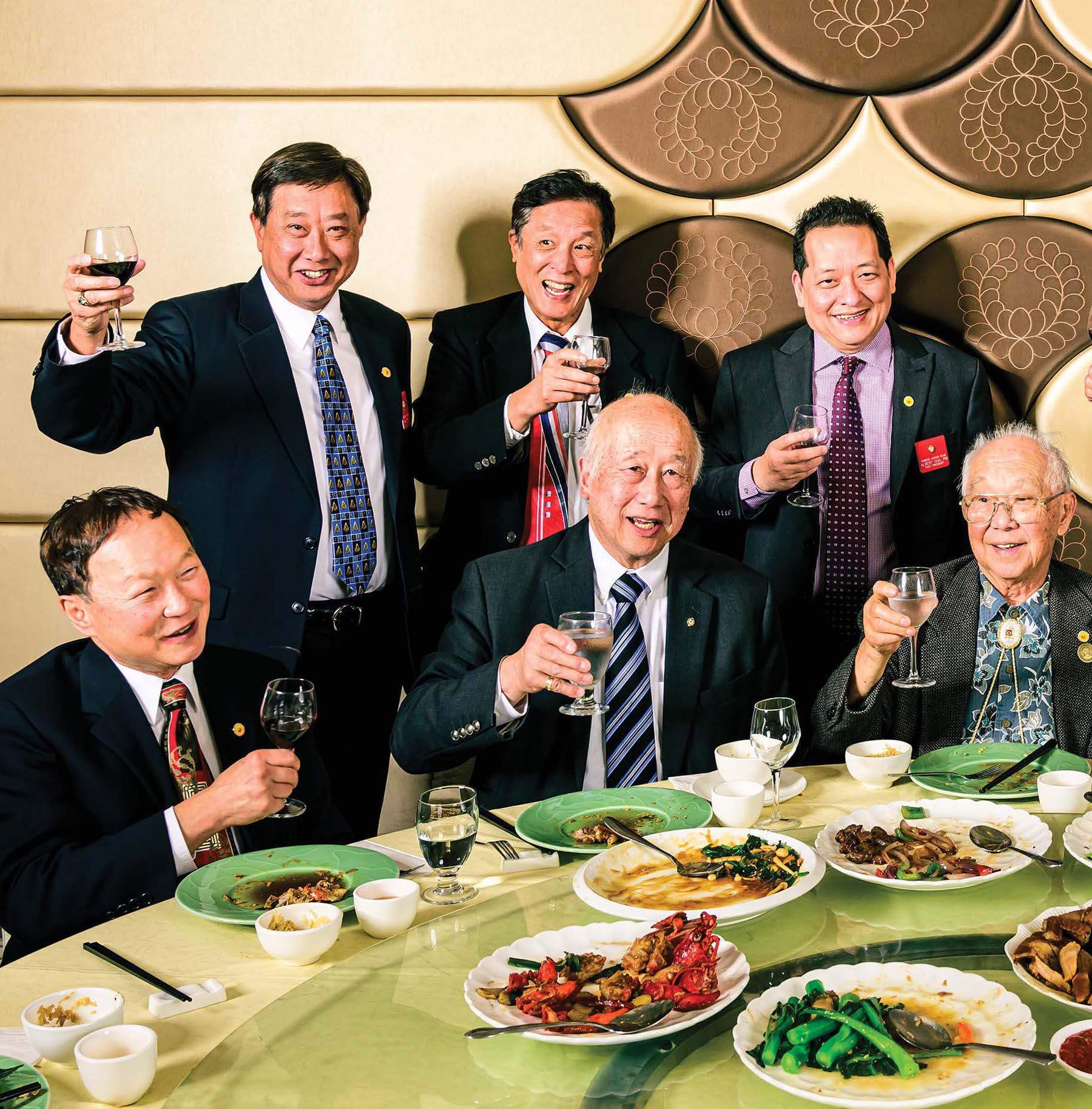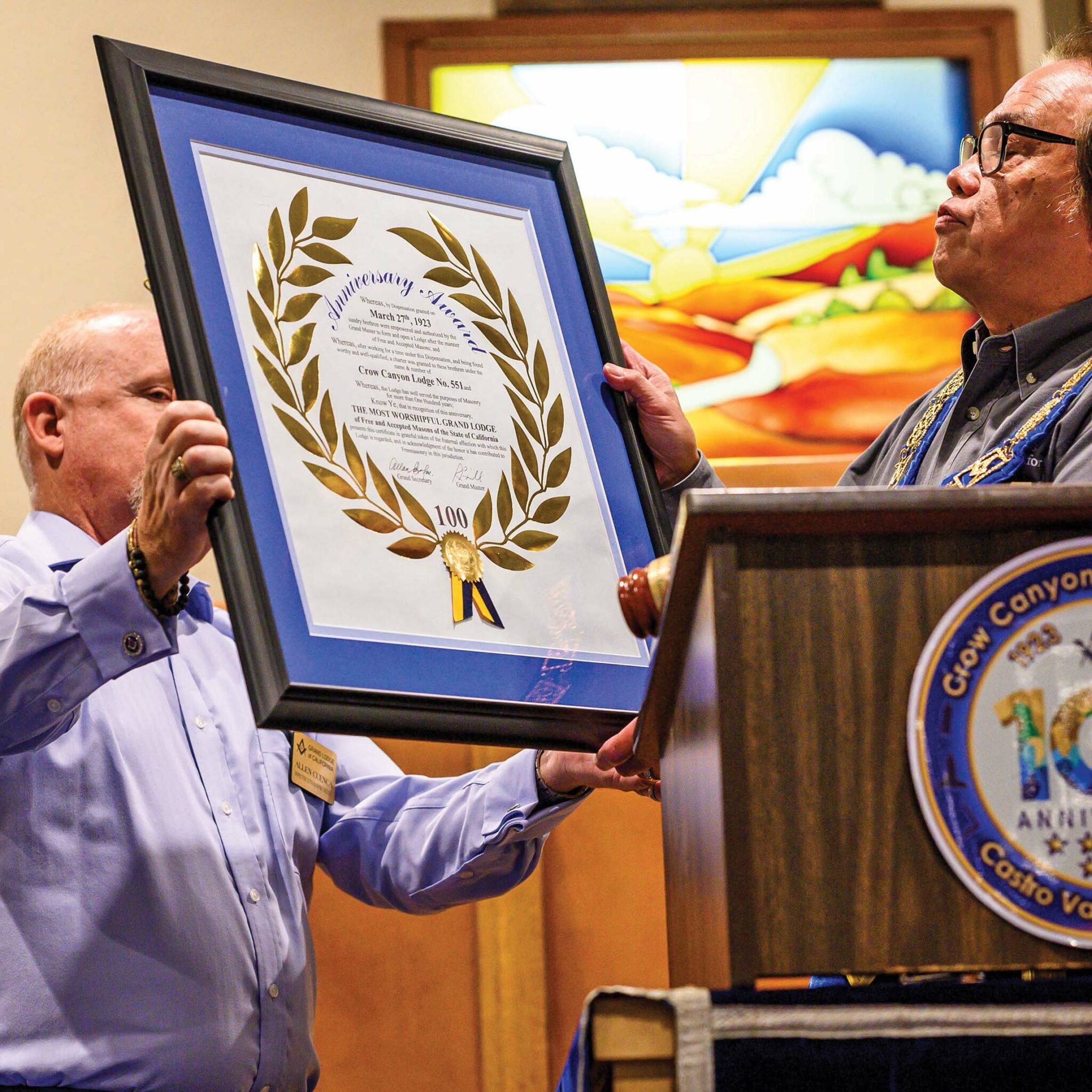
In Masonry and Politics, Finding Common Ground
The political fights of daily life are conspicuously absent from the Masonic lodge. Can those lessons be practiced in the outside world?
By Justin Japitana
California Freemason: I understand you’re an expert on Masonic tattoos.
Rene Ceniceros: I’ve been tattooing for 16 years; I’m mostly known for my black and gray and fine-line work. During the pandemic, I started my own clothing line, Sanctum Secretum, with a lot of my Masonic tattoo designs and imagery. One of the reasons I like doing Masonic tattoos for brothers is that since I’m a Mason, they don’t have to explain these symbols’ meaning to me or give away any secrets. I’ve even corrected some Masonic tattoos where there’s a missing detail or something’s pointed the wrong direction.

CFM: What are the most common Masonic tattoos you’ve done?
RC: Square and compass tattoos are the most popular, but I try to grease it up—add my own design. I’ve also done a few sleeves with allegories from the first, second, and third degrees. I’ve done some Shriner tattoos, some sacred geometry designs. I’ve also tattooed people with their lodge logos, and I’ve even helped create logos for a few lodges. I made a design for Martinez № 41. Apparently, it’s the home of the martini, so the design had a martini glass in it.
CFM: Do you see a connection between Masonry and your artwork?
RC: I think tattoos are like a rite of passage. You’re going to be a Mason as long as that tattoo is around. We see them as a reminder, too—a representation of something greater than us. Also, if you’re a brother and you see someone with an obscure Masonic tattoo, you give them a nod or a look.
CFM: And I’ve heard you’ve even given some tattoos in Masonic lodges, right?
RC: Yes, in September our lodge hosted a Tiki Tattoo social event. We had three tattoo artists, including me, from different lodges come out. We created some Masonic designs in advance, people chose one, and we’d tattoo them on the spot. I didn’t expect it to take off, but it did. We probably tattooed 20 people that day. And since it was open to families and friends, we even tattooed some of the wives.
CFM: What would you say was the goal of those events?
RC: Besides bringing brothers together for a good time, these events are our way to engage with a younger crowd. By hosting really unique events, we break the stigma that Masons are just stuffy older guys. I even designed the flyers. When people see a cool event that’s out of the ordinary, or even a curious-looking flyer, they’re more likely to show up.
CFM: What’s it like knowing your designs are going to be on someone’s body permanently?
RC: Tattooing is a very personal interaction, especially as it’s a profession where you’re allowed to touch another human. It lowers a person’s walls. I get to hear their whole life story, and not just through Masonry. It’s always awesome to tattoo a brother—and yeah, it’s also nerve-racking.
CFM: How did you first learn about Freemasonry?
RC: I’ve known about the craft since I was a child. I think I was 12 when I first saw that episode of The Simpsons about the Stonecutters. At my grandfather’s funeral I noticed his Masonic ring, and I asked my uncle about it. He told me to ask him again when I turned 18. So Masonry was always in the back of my head. It turns out my family in Tijuana is actively involved in Masonry, so I plan to visit some lodges there when I get the chance.
CFM: What do you most enjoy about being a Mason?
RC: A little bit of everything. The camaraderie, the teachings, the esotericism. As a parent raising two young men, Masonry has helped teach me patience and understanding. Also, being with like-minded people, I’m able to connect with brothers who are also parents, and it’s great to share insight with them about parenting and ultimately how to raise our kids to be better than us.
PHOTOGRAPHY BY:
Mathew Scott

The political fights of daily life are conspicuously absent from the Masonic lodge. Can those lessons be practiced in the outside world?

For 77 years, the Chinese Acacia Club has created a space for Chinese American Masons, a historically underrepresented group.

How a century-old Masonic lodge boom is still reverberating today.